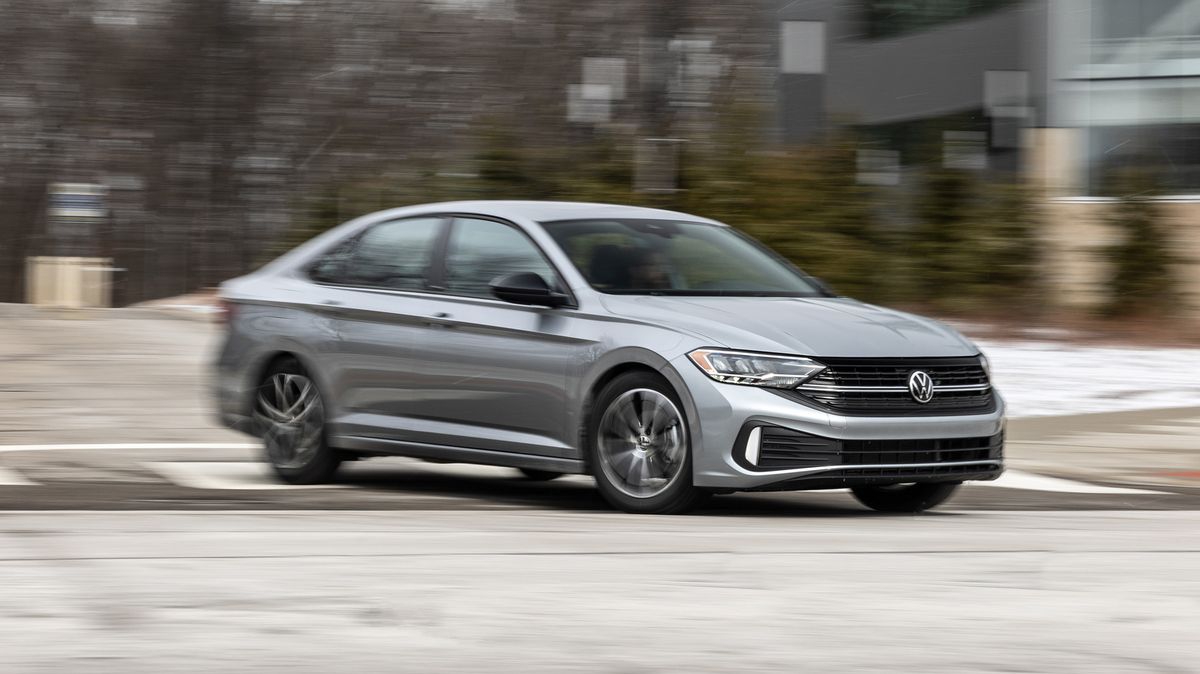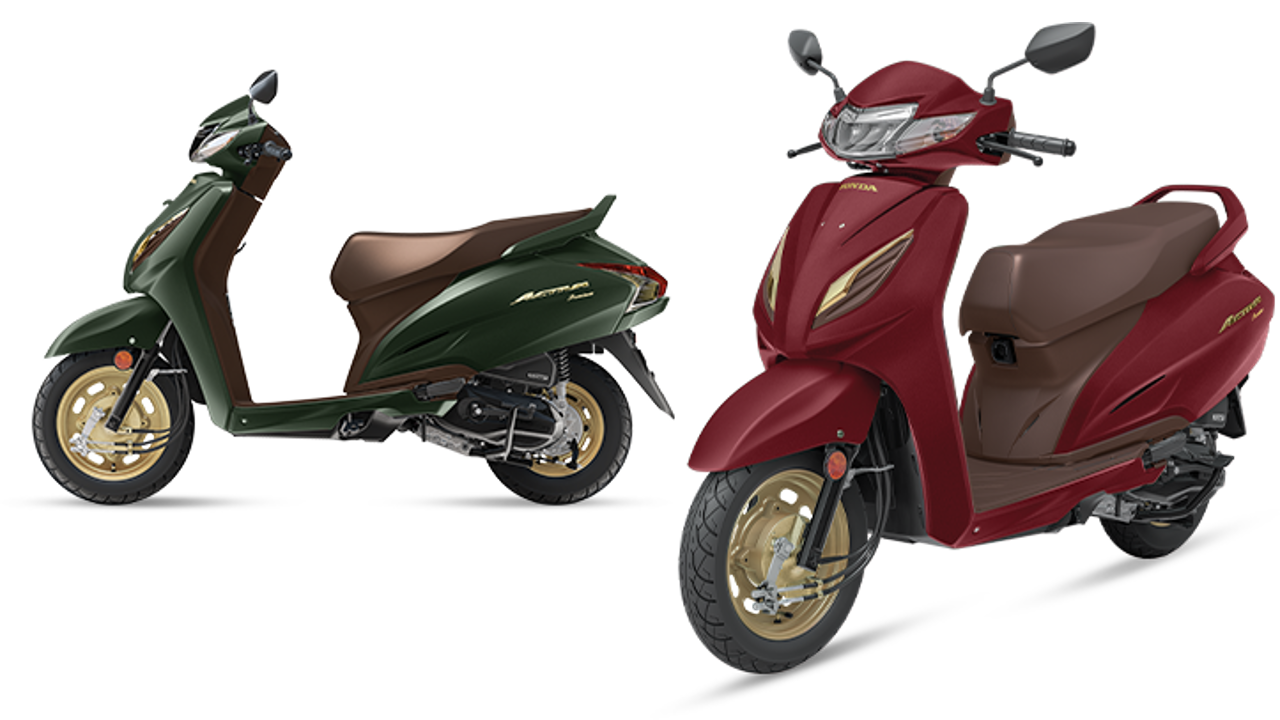You start the Volkswagen Jetta Sport with a key. Remember those? Ignition keys are to cars what snail mail is to email: so last century. That key says a lot about what to expect from this version of VW’s compact sedan too. It’s a simple, basic, and straightforward automobile. Nothing fancy here. But given that this Jetta also comes with a six-speed manual gearbox, a Sport badge stuck to its B-pillars, and a surprisingly low MSRP, we felt compelled to find out if it’s a budget-priced GLI—a sports sedan we have more than a little affection for.
The Sport fits into the Jetta lineup one up from the base S, a modest $900 upcharge to a very reasonable $22,650 starting price, some $10,030 less than a GLI. In the Sport’s case, basic doesn’t mean totally bereft, though. The Sport comes with a decent amount of equipment. Its standard 17-inch alloy wheels and the LED headlights and taillights on all Jettas keep it from looking like a penny-pincher from the outside.
There’s no mistaking that the Sport’s roomy interior is outfitted to a price, however. It’s well assembled and there are a few niceties on hand, such as the 8.0-inch digital instrument cluster, a pair of front USB ports, and attractive cloth seats. But hard plastic abounds, the standard HVAC system is manually controlled, the front seats lack bun warmers, and the tiny 6.5-inch infotainment screen is a look back in time. Because it’s not VW’s latest touchscreen system, though, it does at least feature both a simple user interface and volume and tuning knobs. Our test car had but one option, the $955 Driver Assistance package, which adds adaptive cruise, rain-sensing wipers, several driver-assist features, and a satisfyingly thick-rimmed, flat-bottomed, leather-covered steering wheel.
That steering wheel is almost as nice as the one in the GLI, and it is the sportiest thing about the Sport. No worries, though. This is a friendly, pleasantly refined car. It starts, literally and figuratively, with the Sport’s engine, a turbocharged 1.5-liter four-cylinder that develops 158 horsepower at 5500 rpm. It keys to life with a quiet hum that barely rises above a whisper, is smooth across the full sweep of the tach, and makes the Sport feel more expensive than it is. It’s no surprise our six-speed manual car’s straight-line sprints—60 mph in 7.0 seconds and a quarter-mile in 15.5 seconds at 92 mph—are no match for the 228-hp GLI six-speed’s—60 mph in 6.1 seconds and the quarter in 14.6 seconds at 100 mph. Still, not a bad showing for the Sport, as it matches the performance of the last Jetta automatic we tested, with a 1-mph higher trap speed in the quarter-mile.
Unfortunately, the Sport’s performance falls to its knees relative to the feisty GLI in normal urban driving. Though the specs say the Sport makes its full 184 pound-feet of torque at 1750 rpm, our right foot said otherwise. In city traffic it’s easy to catch the engine napping off-boost; let the revs drop below 2000 rpm and it’s as if gerbils have replaced the horses under the hood. Flooring the accelerator has minimal effect. That shortfall of ready torque showed up graphically in our top-gear acceleration test where the Sport took an interminable 28.7 seconds to go from 30 to 50 mph; the GLI did it in 12.3 seconds. The Sport does a lot better at higher engine and road speeds, posting a 13.6-second 50-to-70-mph time to the GLI’s 8.4 seconds. It’s fun to keep the engine in its perky zone thanks to the easy-shifting six-speed manual. Clutch action is light too, so this is a pleasantly involving car to pilot, even at lower speeds.
The Sport proves adept at the rest of the driving experience, if not intoxicating. A supple ride and confident steering imbue it with a surprisingly refined persona that complements the engine’s quiet ways. Volkswagen even made some minor efforts to make it more engaging to drive than the base S model by lowering its suspension 15 millimeters and fitting it with a larger front anti-roll bar. While it’s not a car that begs you to flog it down a two-lane, when leaned on, it stays composed. And though it can’t match the sharper responses of the GLI, the Sport’s 0.87-g skidpad grip is 0.01-g better, while its 176-foot stop from 70 mph is only two feet longer. The limiting factor here is that both cars are shod with all-season tires; a sports sedan like the GLI deserves stickier rubber.



